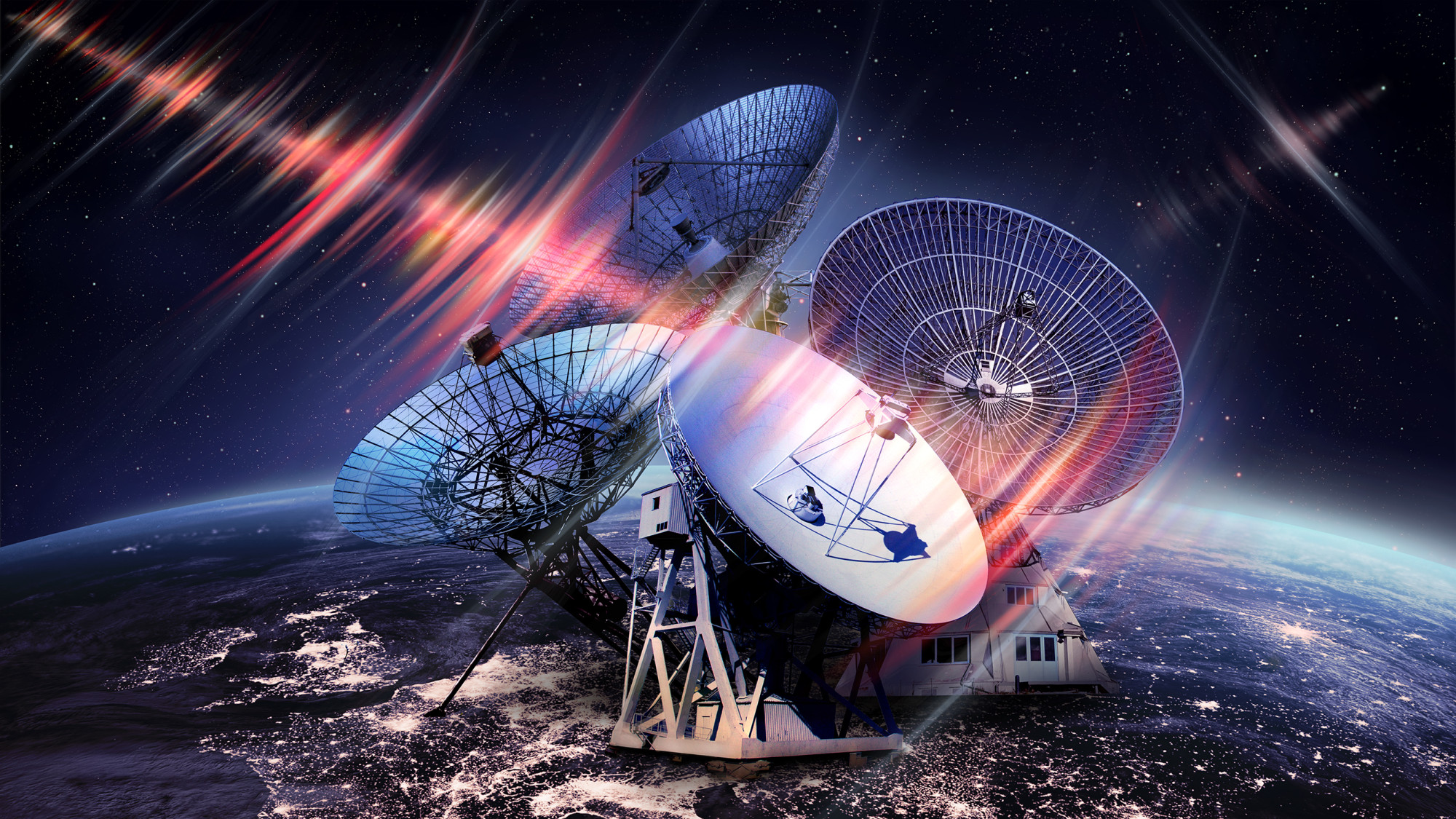
Quadrant telescope reveals amazing statistics of cosmic flashes
Scientists led by Chalmers astronomer Franz Kirsten studied the famous source of recurring fast radio bursts – a cosmic phenomenon that remains unexplained. Compared with previous measurements, scientists have reached a conclusion with far-reaching consequences: any source of fast radio bursts will repeat itself if it is monitored long enough and carefully enough. The research team, a unique collaboration between professional radio astronomers and radio amateurs, used four telescopes in northern Europe, including ASTRON's Westerbork Synthesis Radio Telescope.
Fast radio bursts have puzzled astronomers for more than fifteen years. These short, bright flashes of radio waves often last only fractions of a second and can be seen by radio telescopes from deep in space.
In a new study, scientists used radio telescopes in Sweden, Germany, the Netherlands and Poland to track a recurring source of fast radio bursts. “This is the longest study to date of a single source of fast radio bursts,” says Wolfgang Herrmann, a radio amateur and member of the science team.
46 bright bursts
For several weeks, the four telescopes monitored the radio source for up to 12 hours a day. The observing campaign was divided between four telescopes: the 25-meter diameter telescope in Onsala, Sweden, a 25-meter dish from the Westerbork Synthetic Radio Telescope (WSRT) in the Netherlands, the 32-meter diameter telescope in Toruń, Poland, and the 25-meter diameter telescope in Stockert, Germany. The telescope at Stockert is operated by the non-profit organization Astropeiler Stockert eV, whose members are represented on the science team.
In all, the telescopes recorded 46 bright bursts, each lasting only a few milliseconds.
“This source had been previously studied with a much larger radio telescope, FAST in China, so we knew what to expect. But we were really surprised by what we saw. Of the bursts we collected, many of them were much brighter than we expected.” “, says Franz Kirsten, astronomer at the Onsala Space Observatory, Chalmers.
Surprising conclusions
Astronomers say that if this recurring source is typical, they can draw two surprising conclusions.
First, the new observations point to a surprising new explanation about the sources of fast radio bursts. All explosions recorded so far have been observed only once. “Since some sources repeat themselves, it has been speculated that they are all capable of doing so. Now we finally have statistics from repeaters that allow us to make a good comparison with non-repeaters. It appears that this may indeed be true: all fast radio bursts,” says team member Omar Ould. “It repeats if you look long enough,” said Bucatin, an astronomer at Astron and the University of Amsterdam.
Second, the brightest fast radio bursts can be seen at enormous distances. We believe that such bright explosions can be seen from the most distant galaxies we know of, like the one recently discovered by the James Webb Space Telescope, which we see in light that has traveled to us since the universe was only a few hundred million years old. “It's old,” says Marcin Gawronski, a member of the team at Nicolaus Copernicus University in Toruń, Poland.
History of the universe
Although scientists do not yet know what causes fast radio bursts, there is several pieces of evidence linking them to the dense magnetized remains of exploded stars called magnetars and neutron stars.
“If we can see fast radio bursts from the time when the first stars and galaxies were shining, that would give us a completely new way to get to that time in the history of the universe,” says Franz Kirsten.
The research results are published in the article Repeated and non-repeated FRBs are related by their energy distributionswhich was published on January 4, 2024 in the journal Nature Astronomy.

“Travel enthusiast. Alcohol lover. Friendly entrepreneur. Coffeeaholic. Award-winning writer.”
